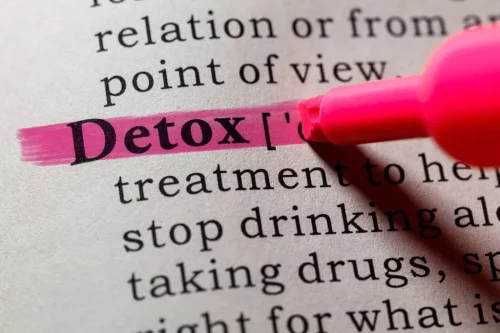
For example, a 2017 study found that white youth who had a higher ethnic identity were more likely to misuse substances such as cannabis and alcohol. While the new product was being opened up for review by western media, the company’s refusal to comment on the executive’s moral values sparked the first signs of controversy — albeit mostly outside China. Caffeine could make you feel more alert, but it won’t change your blood alcohol level.

Myth: You can’t become an ‘alcoholic’ by drinking only beer.
- For example, a psychedelic mushroom known as Amanita muscaria has been used ceremonially in Asia for 4,000 years or more, according to research from 2022.
- With proper resources and support, it is possible to address alcohol-related problems and positively change one’s drinking habits.
- Hangovers are characterized by a combination of negative mental and physical symptoms that occur after alcohol consumption, generally starting when blood alcohol concentration (BAC) nears zero.
- Although there are commonalities that exist with experiences with genocide and colonization, each Native American nation has a unique cultural history that needs to be considered.
- This is not an exhaustive review but aims to show the wide range of contexts that may shape alcohol use.
- However, a review of studies published from 2013 to 2019 suggests that people with lower socioeconomic status may be more likely to die from alcohol use disorder.
But without a routine or daily responsibilities, alcohol use can more easily spiral, he says. We can’t then get frustrated with those people because we built out a cultural norm around it,” he says. Additionally, alcohol can damage the nerves in the inner ear, affecting balance. This is a recipe for falls, which are typically much more traumatic in older adults and can even be deadly.
Myths about alcohol and alcohol use disorder

A 2015 study involving 561 students found that children who drank alcohol before sixth grade were more likely to abuse alcohol when they reached ninth grade. An Australian longitudinal study conducted between 2010 and 2016 concluded that there was no evidence behind the idea that parents supplying underage children with alcohol reduces alcohol-related harms. The primary goal you can take from this article is that you shouldn’t trust every detail you hear about alcohol, even if I didn’t talk about all of the alcohol myths. In a 2010 review of more than 40 researchers, people who responded differently to various kinds of alcohol usually did so to compensate for the anticipated effects. Because limits are the first to go once you drink, you could appear as though you are in a fantastic attitude and the life of the party while you experience the opposite.

Myth: Everybody drinks.
The notion of stages of change in addictions treatment (based on Prochaska and DiClemete’s work dating back to the 1970s and 1980s) is well established in community-based programs on this reservation. It is unclear how exposure to these concepts may have influenced these men’s recovery narratives or their understanding of the change process. Through continued contact with Native role models, a reconstruction of Native identity takes place. So-say states 13 myths about alcohol that he entered formal alcohol treatment “at least seven times” but what were most effective were the traditional ceremonies and the “medicine” he learned from his Elders. The qualitative data were collected through loosely structured, open-ended, face-to-face interviews between 1 and 3 hours in length. The initial interview questions were informed by the research questions, the reflexive process, and fieldwork done by the PI prior to the formal study.
A recent study found that Mexican immigrants who come to the United States before age 14 have higher alcohol consumption rates than those who are older when they immigrate (Reingle et al. 2014). Immigrants who come at a younger age have alcohol consumption patterns similar to their U.S.-born counterparts. The study by Reingle and colleagues also shows that immigrants who arrive when they are younger than 14 and who live beyond the U.S.−Mexico border region have much higher rates of alcohol use than immigrants in the border region. This particular finding suggests that where immigrants live is another social context worth further investigation.
Myth 9: High-functioning individuals can’t have a drug or alcohol problem.

Alcohol Myth #3: The “Beer Before Liquor, Never Sicker” Myth
- Their narratives suggested the ways in which elements of traditional cultural values and practices facilitate healing in syncretic models and Nativized treatment.
- Substance use treatment should be based on evidence-based practices and consider each individual’s medical history, substance use patterns, co-occurring disorders, and personal preferences.
- International students flock to Japanese universities to study the language of the anime series they are watching.
- High-functioning individuals may be adept at hiding their substance use from others, leading to the misconception that they do not have a drug or alcohol problem.
- You’ll undoubtedly be more comfortable, but there’s also an excellent possibility that any remaining hangover symptoms will vanish.
- This form of research is inductive in approach in that, rather than beginning with a theory and formal hypothesis that is verified and understood through the collection of data, the data are examined for the theories that may be contained within them.
- It also opens the space to acknowledge the role of alcohol abuse of historical trauma, a subject that is gaining greater attention in mental health care within Indian country.
- In other cultures, drinking is seen as a way to bond with others and can lead to increased alcohol consumption.
- Receive free access to exclusive content, a personalized homepage based on your interests, and a weekly newsletter with the topics of your choice.
- As May argues, there is a distinction to be made between alcohol abuse and alcoholism.







No Response to "Why is this Chinese video game causing such a stir?"